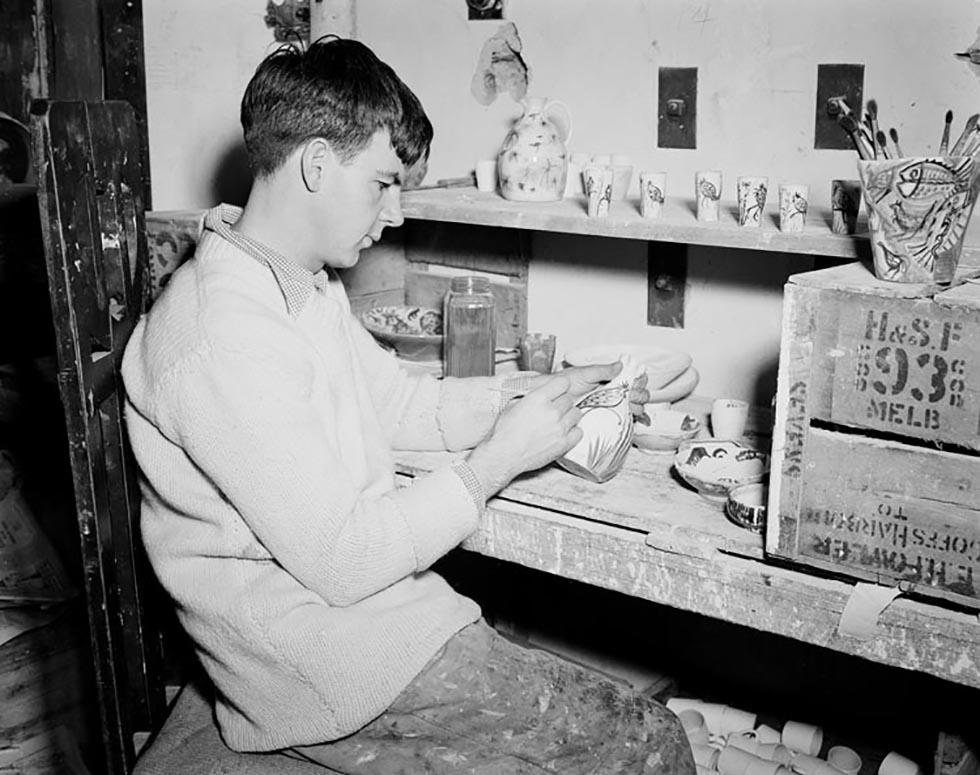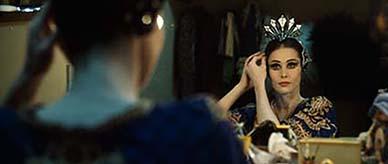


About this record
This is a black-and-white photograph of celebrated Australian artist Arthur Merric Bloomfield Boyd, taken while he was at work in his pottery studio. He is sitting in front of a wooden bench on which are several pieces of pottery at different stages of completion. To the right of him is a wooden crate on top of which is a container holding several paintbrushes.
Educational value
- Arthur Boyd (1920–99) was one of Australia's greatest artists of the 20th century, and the most famous member of the artistic Boyd family. Although better known as a painter, Boyd's interest in pottery probably began with his father William Merric Boyd – one of Australia's first and most gifted studio potters. William Boyd produced unique works of ceramic art, and contributed to his son's deep love of the Australian landscape.
- Ceramics were of great importance to Boyd's work and life. As a child he built his own kiln and fired small clay models of animals. In 1944 Boyd and his brother-in-law John Perceval, along with Peter Herbst, established Arthur Merric Boyd (AMB) Pottery in Murrumbeena, where this photograph was probably taken. AMB Pottery was characterised by an open friendliness that saw many artists and Boyd family members working in harmony.
- As well as working with pottery and ceramics as part of AMB Pottery, Boyd also produced non-commercial pottery and ceramic artworks. These included his ceramic tile paintings (1949) and his commission to work on a ceramic pylon, known as Totem Pole, for the Olympic Pool in Melbourne (1954–56). Boyd once commented that his ceramic pieces provided him with a greater surprise than any of his paintings because they had been formed and purged in the kiln.
- During the 1940s Boyd was establishing his career as a painter, painting mostly in the impressionist style – a 19th-century movement characterised by visible brushstrokes and the play of light. His style changed around that time as he became aware of the Modernist painters of Europe, and he began to experiment with urban settings and bolder images. Many of his early paintings show his characteristic use of thick oil paint laid on with a palette knife.
- Boyd continued to work on oil paintings and Australian landscapes throughout his career, developing a national and international reputation, with exhibitions both in Australia and overseas. He often painted images of Indigenous Australians, and his 1950s series Half-caste Bride brought him enormous critical acclaim. His landscapes of Shoalhaven and Bundanon in New South Wales are also celebrated.
Acknowledgments
Learning resource text © Education Services Australia Limited and the National Archives of Australia 2010.
Need help with your research?
Learn how to interpret primary sources, use our collection and more.

